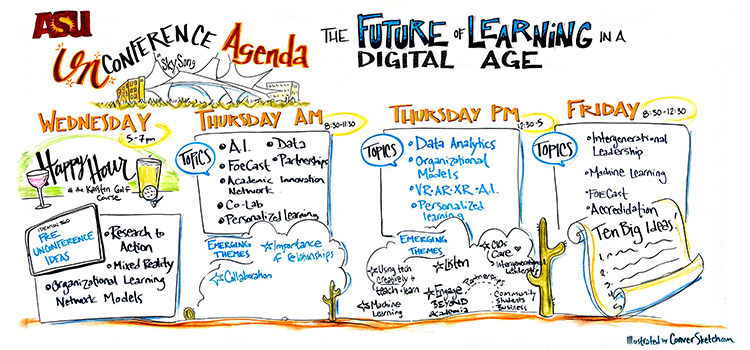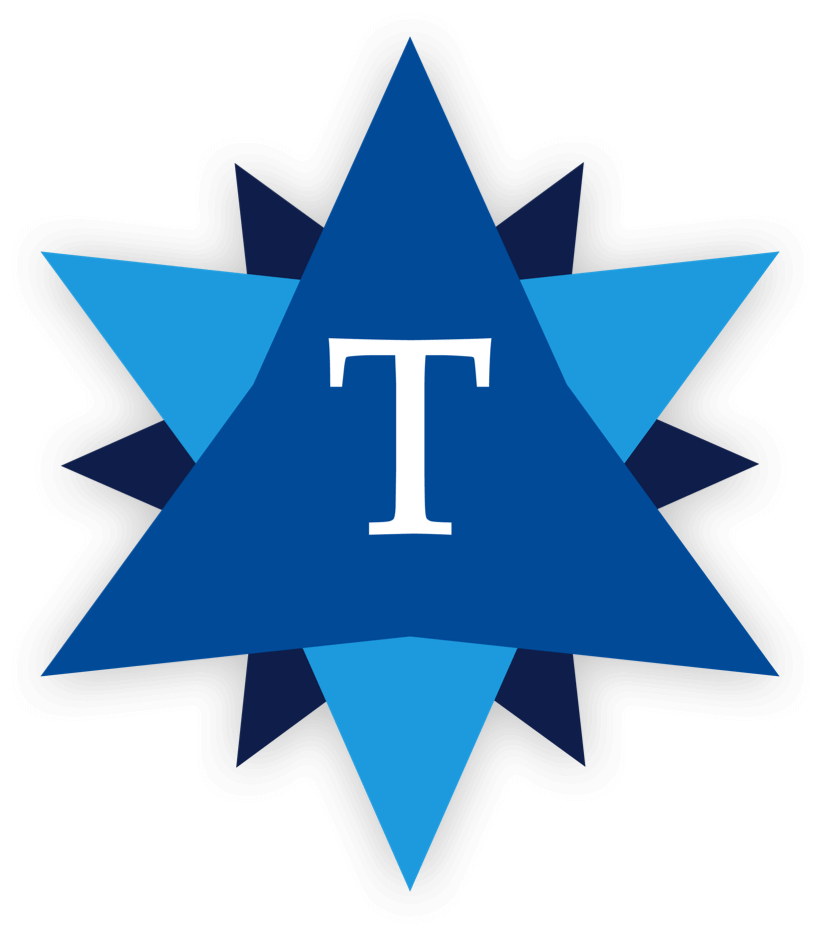The Future of Education and the Learning Management System
Former Tambellini Author

From April 25–27, the Tambellini Group co-sponsored the convening of nearly 130 higher education thought leaders who are helping to shape the future of education. The Unconference of Dreamers, Doers, and Drivers was held at Arizona State University and hosted by their new CIO, Lev Gonick. The two-day gathering was built around three pre-agreed upon tracks that participants self-selected to join. They included Research to Action, Organizational Network Models, and Mixed Reality Environments and Student Centered Learning Frontiers. I chose to work in the last group as my role as a Tambellini analyst is to research how emerging pedagogies and ed tech advancements are shaping digital learning environments such as learning management systems (LMS).

In my recent white paper, From Portal to Platform: The Evolution of the Learning Management System, I investigated the implications of pedagogical trends such as personalized learning and micro-credentials on next generation LMS—topics of great interest for many in attendance at the Unconference. In my section of the report on personalized learning, I argue that next generation learning environments will increasingly leverage learning analytics to create more flexible and customizable learning for students. I noted that the Open University Australia is already embarking on this analysis of information in their Personalized Adaptive Study Success (PASS) project where data from the CRM, LMS, and curriculum profiles are combined to recommend activities, predict course mastery, and offer dynamic course content to students.
On the first full day at the unconference my “neighborhood,” those interested in different aspects of personalized learning area, were tasked with coming up with one, three, and five year plans for personalized learning under the categories of Dream, Do, and Drive. Our collective dream in year one was to develop and sustain effective models and criteria for good teaching and learning—it all starts there. To do so requires the clear creation of agreed upon learning objectives informed by data, student feedback, and peer review. Rewarding good teaching and rewarding learning are ultimately driving this first phase.

Within three years we envisioned stimulating a campus culture that is informed by models of good teaching. This is done by using design thinking skills, business to education partnerships, and the overall revamping of the curriculum to include the integration of more real world skills. External pressures are disrupting higher education and urgent change is needed for colleges and universities to remain in business. Higher education is being disrupted by advancements in technology, mounting student debt, emerging financial models, and an ever increasing demand for return on investment for students. Higher education’s long term vision is scaling good personalized teaching and learning through the creation of standards and agreed upon learning outcomes that are sourced and vetted by scholars. This last phase is ultimately driven by the need to increase student success, satisfaction, and retention—critical measurements that we all agreed upon at the Unconference.
Day two of the Unconference featured an idea that can radically change the face of higher education and reinforce the importance of these venerable institutions, but it will require the loosening of control over how one gets a degree and what that degree may look like. In my section of “From Portal to Platform” on Gamification and Game-based learning, I introduce badging/micro-credentialing. It’s a concept that I see as a critical component of the next generation learning environment, especially as employers move to skills-based rather than degree-based hiring processes. It also relates to other trends within higher education, especially competency-based education which reimagines the traditional semester credit system and breaks these courses into smaller units. This is especially helpful for a growing population of adult learners and shakes up the way in which we can certify skills in lifelong learning scenarios.
(Check out this video with Phillip Long at the University of Texas at Austin to learn more about micro-credentialing.)
The folks that congregated around the micro-credentialing neighborhood on the last day were perhaps some of the most driven to see progress in this area. One attendant even pulled me aside to say that we may look back at this moment as the start of a major movement. We started with the same matrix template as in the other exercises. Our shared dream of micro-credentialing in the first year is based on starting with a shared taxonomy or language for what we are doing with the goal of connecting formal and informal learning through credentialing. To do this thought leaders will need to partner with Registrars and have the proper technology support with a mechanism for continued conversation. To keep the dialogue going beyond the meeting, Laurie Burruss from Lynda.com/LinkedIn Learning created the LinkedIn Group MicroCredentials – FOECast where members can share best practices, white papers, and other resources about all aspects of this topic. Driving this first year are alumni interested in lifelong learning, industry partnerships, and existing disruptive competition.

During the midterm, the dream is to get registrars and industry to help define the skill sets that will inform these new credentials. Higher ed will need to map existing traditional credentials into microlearning, create meaningful packages of pathways, and define new roles to support learners. The drivers for the three year vision are the disruptions brought about by the gig economy, new ethical conversations regarding instructors caring about the employability of students, and degree perishability.
Finally in five years, the dream is the creation of compound diplomas, greater collaboration between community colleges and research institutions, and more opportunities for the employers of adult learners to help pay for building their skills. To get there we will need to articulate what traditional programs can offer that existing competition such as Coursera and edX cannot. This is driven by the need for more thoroughly evaluated and assessed competency-based learning opportunities. These are indeed big dreams, but they need to start somewhere. If higher education doesn’t go this way, you can be certain the disruptors currently in the market will be happy to provide for the students of the future. Are you a dreamer, doer, or driver? If so connect with The Tambellini Group on Twitter through @TambelliniGroup. I’d love to speak with you, see what you think of these ideas, and hear about your vision of the next generation, student-centered learning frontier.
Categories
Share Article:

Other Posts From this Author:
© Copyright 2025, The Tambellini Group. All Rights Reserved.